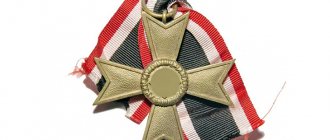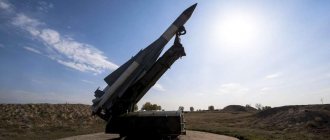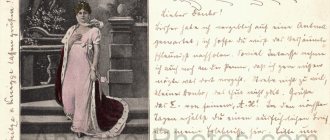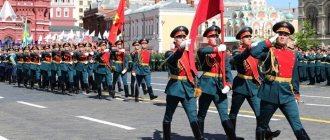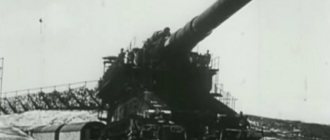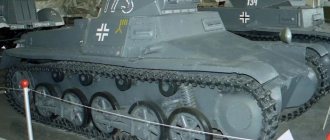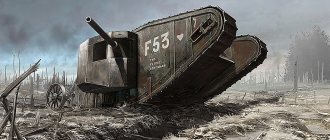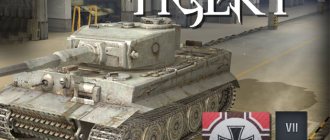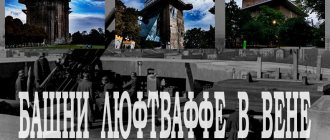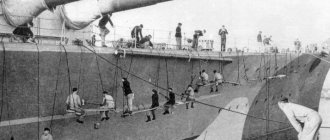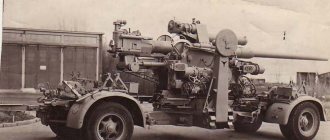29th Grenadier (Infantry) Division Waffen SS "Italy" (Italian No. 1).
This division owed its name to the fact that it consisted of Italian volunteers who remained loyal to Benito Mussolini after his release from prison by a detachment of German paratroopers led by SS Sturmbannführer Otto Skorzeny. The tactical sign of the division was a vertically located lictorial fascia (in Italian: “littorio”), inscribed in the heraldic shield of the “Varangian” (“Norman”) form - a bunch of rods (rods) with an ax embedded in them (the official emblem of the National Fascist Party of Benito Mussolini) .
Education and training
SS soldiers had to undergo appropriate combat training, which was carried out in several stages and lasted for three months. The main objectives of the intensive training of recruits were:
- excellent physical fitness;
- knowledge of small arms and impeccable possession of them;
- political indoctrination.
The training in the art of war was so intense that only one out of three people could complete the entire distance. After the basic training course, recruits were sent to specialized schools, where they received additional education appropriate to the chosen branch of the military.
Further training in military wisdom in the army was based not only on the specialization of the branch of service, but also on mutual trust and respect between candidates for officer or soldier. This is how the Wehrmacht soldiers differed from the SS soldiers, where strict discipline and a strict policy of separation between officers and privates were at the forefront.
30th Grenadier (Infantry) Division of the Waffen SS (Russian No. 2, also known as Belarusian No. 1).
This division consisted mainly of former fighters of the Belarusian Regional Defense units.
The tactical sign of the division was the “Varangian” (“Norman”) heraldic shield with the image of the double (“patriarchal”) cross of the Holy Princess Euphrosyne of Polotsk, located horizontally. It should be noted that the double (“patriarchal”) cross, located vertically, served as the tactical sign of the 79th Infantry, and located diagonally - the emblem of the 2nd motorized infantry division of the German Wehrmacht.
Faithful sons of their Fuhrer
Recollection of an SS soldier: “Our guiding principles were duty, loyalty and honor. Defense of the Fatherland and a sense of camaraderie are the main qualities that we cultivated in ourselves. We were forced to kill everyone who was in front of the barrel of our weapons. A feeling of pity should not stop a soldier of great Germany, either in front of a woman begging for mercy, or in front of children's eyes. We were taught the motto: “Accept death and bear death.” Death should become commonplace. Each soldier understood that by sacrificing himself, he thereby helped great Germany in the fight against the common enemy, communism. We considered ourselves warriors for the future of the world, Hitler’s elite.”
These words belong to one of the soldiers of the former Third Reich, private SS infantry unit Gustav Franke, who miraculously survived the Battle of Stalingrad and was captured by the Russians. Were these words of repentance or the simple youthful bravado of a twenty-year-old Nazi? Today it is difficult to judge this.
33rd Grenadier (Infantry) Division of the Waffen SS "Charlemagne" (French No. 1).
This division was named in honor of the Frankish king Charlemagne (“Charlemagne”, from the Latin “Carolus Magnus”, 742-814), who was crowned Emperor of the Western Roman Empire in 800 in Rome (which included the territories of modern Northern Italy, France, Germany, Belgium, Luxembourg, the Netherlands and parts of Spain), and is considered the founder of modern German and French statehood. The division's emblem was a dissected "Varangian" ("Norman") shield with half a Roman-German imperial eagle and 3 fleurs de lys of the Kingdom of France.
36th Waffen SS Grenadier Division "Dirlewanger".
The emblem of the division was 2 hand grenades-“beaters” inscribed in the “Varangian” (“Norman”) shield, crossed in the shape of the letter “X” with the handles down.
In addition, in the last months of the war, the formation of the following new SS divisions, mentioned in the orders of the Reichsführer SS Heinrich Himmler, was begun (but not completed):
35th SS Grenadier (Infantry) Division "Police" ("Policeman"), also known as the 35th SS Grenadier (Infantry) Police Division. Information about the tactical sign (emblem) of the division has not been preserved.
36th Grenadier (Infantry) Division of the Waffen SS. No information about the division's emblem has been preserved.
37th SS Volunteer Cavalry Division "Lützow".
The division was named in honor of the hero of the fight against Napoleon - Major of the Prussian army Adolf von Lützow (1782-1834), who formed the first volunteer corps in the history of the Wars of Liberation (1813-1815) of German patriots against Napoleonic tyranny (“Lützow’s black huntsmen”). The tactical sign of the division was the image of a straight naked sword inscribed in the heraldic shield-tarch with the tip up, superimposed on the capital Gothic letter “L”, that is, “Lutzov”).
Fuhrer's order
The authority of the Schutzstaffel (SS) increased significantly thanks to the personal order of the Fuhrer. The published order stated that no one had the right to give orders to SS soldiers and officers except their immediate superiors. In addition, it was recommended that all SA units, the assault troops known as the “Brown Shirts,” assist in every possible way in staffing the SS Army, supplying the latter with their best soldiers.
38th SS Grenadier (Infantry) Division "Nibelungen" ("Nibelungen").
The division was named after the heroes of the medieval German heroic epic - the Nibelungs. This was the original name given to the spirits of darkness and fog, elusive to the enemy and possessing countless treasures; then - the knights of the kingdom of the Burgundians who took possession of these treasures. As you know, Reichsführer SS Heinrich Himmler dreamed of creating an “SS order state” on the territory of Burgundy after the war. The emblem of the division was the image of the winged Nibelungen invisibility helmet inscribed in the heraldic shield-tarch.
39th SS Mountain Division "Andreas Hofer".
The division was named after the Austrian national hero Andreas Hofer (1767-1810), the leader of the Tyrolean rebels against Napoleonic tyranny, betrayed by traitors to the French and shot in 1810 in the Italian fortress of Mantua. To the tune of the folk song about the execution of Andreas Hofer - “Under Mantua in Chains” (German: “Zu Mantua in banden”), German Social Democrats in the twentieth century composed their own song “We are the young guard of the proletariat” (German: “Vir sind”) di junge garde des proletariats"), and the Soviet Bolsheviks - “We are the young guard of workers and peasants.” No information about the division's emblem has been preserved.
The restless Fuhrer
Released from prison in April 1925, Adolf Hitler orders his fellow party member and bodyguard Yu. Schreck to form a personal guard. Preference was given to former fighters of the Shock Squad. Having gathered eight people, Yu. Shrek creates a defense team. By the end of 1925, the total strength of the combat formation was about a thousand people. From now on they were given the name “SS soldiers of the National Socialist German Workers' Party.”
Not everyone could join the SS NSDAP organization. Strict conditions were imposed on candidates for this “honorary” position:
- age from 25 to 35 years;
- living in the area for at least 5 years;
- the presence of two guarantors from among the party members;
- good health;
- discipline;
- sanity.
In addition, in order to become a party member and, accordingly, an SS soldier, the candidate had to confirm his belonging to the superior Aryan race. These were the official rules of the SS (Schutzstaffel).
44th Waffen SS Motorized Infantry Division "Wallenstein".
This SS division, recruited from ethnic Germans living in the Protectorate of Bohemia-Moravia and Slovakia, as well as from Czech and Moravian volunteers, was named after the German imperial commander of the Thirty Years' War (1618-1648), Duke of Friedland Albrecht Eusebius Wenzel von Wallenstein (1583-1634), Czech by birth, hero of the dramatic trilogy of the classic of German literature Friedrich von Schiller “Wallenstein” (“Camp Wallenstein”, “Piccolomini” and “The Death of Wallenstein”). No information about the division's emblem has been preserved.
45th SS Infantry Division "Varyag" ("Vareger").
Initially, Reichsführer SS Heinrich Himmler intended to give the name “Varangians” (“Varaeger”) to the Nordic (Northern European) SS division, formed from Norwegians, Swedes, Danes and other Scandinavians who sent their volunteer contingents to help the Third Reich.
However, according to a number of sources, Adolf Hitler "rejected" the name "Varangians" for his Nordic SS volunteers, seeking to avoid unwanted associations with the medieval "Varangian Guard" (consisting of Norwegians, Danes, Swedes, Russians and Anglo-Saxons) in the service of the Byzantine emperors. The Fuhrer of the Third Reich had a negative attitude towards the Constantinople “basileus”, considering them, like all Byzantines, “morally and spiritually corrupt, deceitful, treacherous, corrupt and treacherous decadents,” and did not want to be associated with the rulers of Byzantium. It should be noted that Hitler was not alone in his antipathy towards the Byzantines. Most Western Europeans fully shared this antipathy towards the “Romans” (even since the era of the Crusades), and it is no coincidence that in the Western European lexicon there is even a special concept of “Byzantinism” (meaning: “cunning”, “cynicism”, “meanness”, “ groveling before the strong and ruthlessness towards the weak”, “treachery”... in general, “the Greeks have been deceitful to this day”, as the famous Russian chronicler wrote). As a result, the German-Scandinavian division formed as part of the Waffen SS (which later also included the Dutch, Walloons, Flemings, Finns, Latvians, Estonians, Ukrainians and Russians) was given the name “Viking”. Along with this, on the basis of Russian White emigrants and former citizens of the USSR in the Balkans, the formation of another SS division began, called “Varager” (“Varangians”); however, due to the prevailing circumstances, the matter was limited to the formation in the Balkans of the “Russian (security) corps (Russian security group)” and a separate Russian SS regiment “Varyag”.
During the Second World War on the territory of Serbia in 1941-1944. In alliance with the Germans, the Serbian SS Volunteer Corps also operated, consisting of former soldiers of the Yugoslav royal army (mostly of Serbian origin), most of whom were members of the Serbian monarcho-fascist movement “Z.B.O.R.”, led by Dmitrie Letic. The tactical sign of the corps was a shield-tarch and an image of an ear of grain, superimposed on a naked sword with the tip down, located diagonally.
Beer Hall Putsch by A. Hitler and E. Ludendorff
“Bürgerbräukeller” is a beer hall in Munich at Rosenheimerstrasse 15. The area of the drinking establishment could accommodate up to 1830 people. Since the Weimar Republic, thanks to its capacity, the Bürgerbräukeller has become the most popular venue for various events, including political ones.
So, on the night of November 8-9, 1923, an uprising took place in the hall of a drinking establishment, the purpose of which was to overthrow the current government of Germany. The first to speak was A. Hitler's ally in political convictions, Erich Friedrich Wilhelm Ludendorff, outlining the general goals and objectives of this gathering. The main organizer and ideological inspirer of the event was Adolf Hitler, the leader of the NSDAP, a young Nazi party. In his indictment, he called for the ruthless destruction of all enemies of his National Socialist Party.
The SS soldiers, led at that time by the treasurer and close friend of the Fuhrer J. Berchtold, undertook to ensure the safety of the Beer Hall Putsch - this is how this political event went down in history. However, the German authorities reacted in time to this gathering of Nazis and took all measures to eliminate them. Adolf Hitler was convicted and imprisoned, and the NSDAP party was banned in Germany. Naturally, the need for the protective functions of the newly created paramilitary guard also disappeared. The SS soldiers (photo presented in the article), as a combat formation of the “Shock Detachment”, were disbanded.
